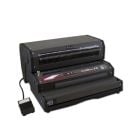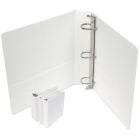Putting Together a Great User Manual
A having a great user manual for your product makes your company look good, and can save money by reducing support calls. Here are a few tips for creating a fun, user-friendly product manual.
1.Use Dead Trees. Or at least recycled ones. While a lot of companies out there are deciding to go with online-only manuals (usually in PDF form), it is worth the extra effort and cost to go to the trouble of giving your customers a hard copy. Yes, you should have a copy online as well, but there are many advantages for both you and your customer to printing and publishing a paper version. First, your customer can have the manual in hand while they are assembling the item, or investigating any problems they may be having - not always possible with a PDF (unless your customer has a laptop, or is willing to print out the manual). Second, you can be assured that all your customers have the manual in hand, meaning, long story short, fewer calls to your support team. And the more you can do to prevent support or service phone calls, the better.
2.Make It Fun To Read. While there are plenty of customers who will only consult the manual when absolutely necessary, there are lots of others who will actually curl up with it, and read it from cover to cover. This is the audience you should be playing for. You don't have to fill your manual full of jokes or anything, but you do need to make sure that it is written in a conversational style, that is it well organized into chapters and sections and if need be, an index so your readers can find specific items quickly and easily.
3.Show AND Tell. People learn in three different ways - seeing, hearing, and touching. There is a segment of the population - those that learn best through hearing -- that will be just fine with simple words on a page. However, you will be doing a great service to a great many more of your customers if you include detailed and specific artwork in your user manual. If you have been tracking support calls, you can make note of the most frequent issues and take special care to address them clearly in future manuals.
4.Use Real People. If at all possible, when it comes to translating your user manual into other languages, use native speakers. Translating software is improving all the time, but it is nowhere near ready to take on a task like this with reasonable accuracy yet. You do not want to be one of those companies whose manuals get chuckled over as they are being read. That goes for highly technical language as well.
5.Choose the Right Binding Style. The more durable and functional, the better. It is always nice when a user manual can lie flat, and/or wrap around, so your customer can read it while his or her hands are busy. Plastic comb and color coil binding are two methods that make this possible. Take a look around online for the option that might suit you best. You can even get your own binding machine, if you find yourself with the need to print a lot of manuals, presentation materials, reports, and proposals on a regular basis.









